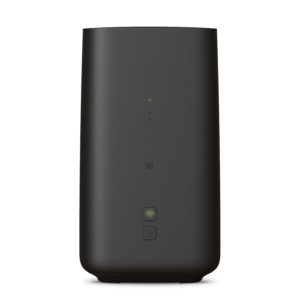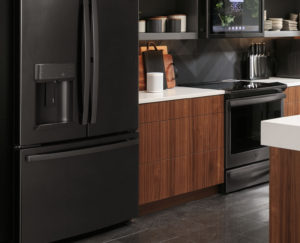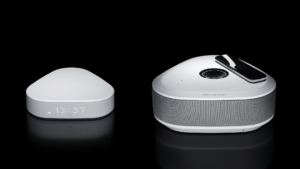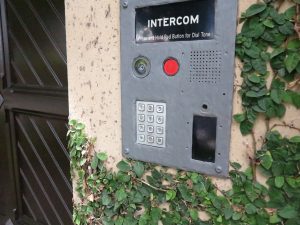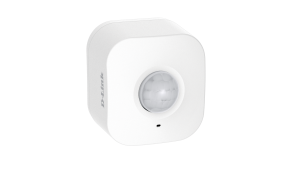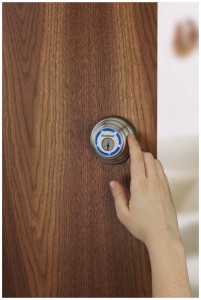2018 will be a very interesting year for personal and small-business computing directions. There will be a few key trends such as heavy use of voice-driven assistants, the rise of the smart home, network-based multiroom audio becoming mainstream amongst other trends. Online entertainment will also face certain trends like the rise of niche-focused online video services, 4K being the norm for TV resolution, virtual-reality and mixed reality being part of gaming amongst other things.
Voice-driven home assistants

Amazon Echo and friends – the device of 2018
4 different voice-driven home assistants to be on the market – Amazon Alexa, Google Assistant (Home), Microsoft Cortana and Apple Siri
A vibrant development ecosystem for each of the voice-driven home assistants. These may include entertainment ideas that integrate one or more devices based on these assistant platforms.
An increasing number of consumer-electronics manufacturers to integrate at least one voice-driven home-assistant in their products. It may encompass devices beyond network-capable smart speakers such as music or home-theatre systems or TV sets. Some vehicle builders are also integrating one of these assistants in the infotainment systems in some of their vehicle models without the need to implement Google Auto or Apple CarPlay.
Video display to be a product differentiator amongst voice-driven home-assistant platforms and products. It would be facilitated through a display integrated in or directly connected to the device, or through a display that is connected to a Chromecast or similar network media device that works with the system. This will augment replies from the assistant in a visual manner, most likely with still images, logos or videos, but can be a path for using the voice assistant to bring up image or video content.
An increased acceptance of “smart speakers” and devices based on voice-driven home-assistant platforms amongst consumers with at least one of these devices appearing in most households. It can also include households using multiple devices in their home, whether on the same or different platforms. This has been demonstrated through the last Christmas shopping season where many Amazon Echo devices were sold during that season.
It will take through a year for the app stores associated with “skills” and functionalities for these voice-driven home-assistant platforms to mature. There will be market requirements that the app stores will identify and enforce in order to assure that users of one of these platforms have a safe and pleasant experience with these devices.A similar situation has had to take place for smartphone and desktop app stores including identifying and removing rubbish from these stores.
Home automation and the smart home
More households to start installing or building out home-automation subsystems in their homes. This may happen with the assistance of telcos, ISPs and monitored-alarm security services offering “connected-home” packages and subscriptions.
Support for multiple smart-home technology platforms to be par for the course for smart-home devices. This may be in the form of Internet-based “home automation hubs” supporting multiple standards or “smart-home” devices being able to work across multiple platforms whether through inherent support or the use of replaceable modules.
Support for at least one voice-driven home-assistant platform to be “de rigueur” for any home-automation subsystem.
Businesses involved with central-heating / air-conditioning and home security to contribute to the “smart-home” scene. This will come about through the supply, installation and maintenance of upgrades and add-ons for extant building HVAC or security infrastructure focused towards integrating it with the “smart home”. As well,businesses supplying and installing new HVAC or security infrastructure will sell equipment that works with the “smart home” at affordable prices.
Bluetooth 5 to become a strong contender as a wireless medium for the smart home. This includes support for “mesh” operation with devices acting as radio repeaters for multiple devices which will be considered a key feature.
There will be an industry expectation for the “smart home” and “Internet Of Things” industry to improve their stance on data security and software robustness. It will be in the form of a software-update cycle being required for devices along with consumers being notified of any bugs or software deficiencies that affect their home network’s data security. This will be underscored by government regulation, insurance-company expectations or industry-driven logo-based certification programs addressing this issue.
Another trend to expect for the smart home is to have this technology work cohesively through large multiple-occupancy buildings. This could range from integrating Amazon Alexa with the entry-door intercom used int these buildings so you can speak to visitors through your Amazon Echo or ask Alexa to “release” the common entry door, to “smart home” systems that regulate heating and lighting in the common areas for consistent comfort, amongst other things/
Network-based multiroom audio
More classes of consumer audio/video equipment to be enabled for network-based multiroom audio. This means that TVs, stereo/home-theatre systems and the like will be offered with multiroom audio functionality, with more of these products in a manufacturer’s range at price points affordable for most people.
DTS Play-Fi and Qualcomn AllPlay to be seen as the “go-to” platforms for network-based multiroom audio where an AV brand hasn’t invested in their own multiroom technology. It can open up paths for multiple brands to invest in their own network-based multiroom product lines without “reinventing the wheel”.
Support for streaming integrated and connected local audio sources to be the norm for multiroom audio. This means that broadcast radio or CDs from integral radio tuners or CD players, or vinyl records played on connected turntables and TV soundtracks emanating from connected TVs can be streamed around a network-capable music system.
Multiroom audio to support multichannel speaker clusters in a group. This could allow a pair of like multiroom speakers to serve as a stereo speaker pair, to the creation of a surround-sound arrangement based around multiple multiroom speakers used in one room.
Online entertainment
The rise of streaming video services focused towards particular entertainment niches and genres. It will include studios with large respected content catalogues adopting a “direct-to-consumer” approach for making their content wares available to consumers via an online path.
Traditional TV channels and radio stations will be relying on online components like video-on-demand services and podcast outlets to keep themselves relevant. This is because of the fact that most of us are listening to or viewing content at our own convenience rather than making an appointment to hear or view it as it is broadcast.
Video-on-demand services will be offering video content at 4K UHDTV resolution with High Dynamic Range pictures for best-case picture quality. The sound will be delivered using Dolby Atmos or similar object-based surround sound as a best-case option.
Virtual, augmented and mixed reality will be seen as an important part of the gaming experience, thus requiring powerful but portable computer equipment. This will increase interest in gaming laptops and small-form-factor gaming rigs of the Intel Skull Canyon kind.
This will cause questions to be asked about the quality of residential Internet services offered by the popular telcos and ISPs. Here, issues will be brought out about latency during video playback or even how long it takes for an online video service to be “ready to play” once you select what you want to view.
Questions are being raised and industry codes-of-practice being looked in to in relation to treasure chests, loot boxes and other elements associated with gambling included in computer and video games either to offer extra gameplay elements like customisations or valuable options. It may also be investigated by various governments under the context of gambling laws, perhaps with a view to regulation of this practice. Similarly app stores may also be looking at ways to make consumers aware of games integrating gambling elements in their gameplay.
Hardware and Software Design
Convergence between desktop and mobile computing
There will be a strong convergence between “regular” desktop / laptop computers that run desktop operating systems, and “mobile” smartphone / tablet computing devices. This will take place in the form of desktop operating systems written to work with ARM microarchitecture used in mobile devices along with mainstream “regular” computers pitched for everyday computing needs being built around the same electronics as a high-end smartphone or mobile-platform tablet.
It will also affect how computer software is developed and sold. Software development tools will allow “one-touch” packaging of executable software forms for traditional Intel CISC and ARM RISC microarchitectures. Similarly, software-development tools will allow for “write once run anywhere” across desktop and mobile usage environments. There will even be the Holy Grail of one being able to write the same piece of software and have it run on all the major desktop and mobile operating systems while having an expedited software-development path.
Highly-powerful yet compact computers

Expect the rise of highly powerful compact computers this year.
This trend is leading towards computers that will become increasingly powerful but compact. This goal is not just facilitated through laptop computers being equipped with the same electronics as a high-end smartphone but there will also be another option where a single piece of silicon will house a CPU along with a discrete graphics processor being the performance option thanks to Intel’s latest processor offering.
For laptops, 2-in-1s and tablets; both options can lead towards the integration of larger batteries which permit longer running time before the battery goes flat. For computers that aren’t portable by nature, the “performance” option with the discrete GPU on the same silicon as the CPU could lead towards small-form-factor desktop and “all-in-one” computers being more powerful.
New Connections
The USB-C and Thunderbolt 3 connectors will become more ubiquitous on computing devices. This includes seeing it as a power / data / digital-audio / video output for highly-portable devices like smartphones, tablets and ultraportable laptops. The number of external-graphics modules will increase especially with highly-portable integrated-chipset designs pitched towards ultraportable laptops.
As mobile devices move away from the 3.5mm phone jack towards USB-C or Lightning sockets for connecting audio accessories, these audio accessories will have their own digital-audio circuitry. It could lead to the availability of wired headsets with highly-strung digital-analogue conversion circuitry for high-quality sound along with microphone arrays, something that was only available with Bluetooth headsets.
The increase in Silicon Valley’s power base
Silicon Valley to become the “new Hollywood” with companies like Netflix, Amazon, Apple and Google creating more of their own video content and providing it through their own video-on-demand services. It can also manifest in the Silicon-Valley multinationals taking over film studios, music labels and other similar names in the entertainment industry.
The Silicon-Valley behemoths, especially Google and Facebook, are being seen as influential as, if not more influential than, traditional media companies. It is called out in relation to the power of these companies to summarily deny information services like social-network presence to individuals or business entities; “turn off the money tap” when it comes to serving advertising on Websites or apps; or “bury” Internet resources unapproved by Silicon Valley so they are hard to find for the average user.
It encompasses home much proper debate there actually is in issue important to civil society and whether Silicon Valley has been manipulating this debate. As well, the data commodity that the Silicon Valley behemoths are trading in is being used as a means to control this debate.
There is also questions raised about online advertising especially in context to brand safety, impact on user experience or true viewership of Websites with end-users, advertisers and publishers wanting to see an environment similar to what is expected for traditional media.
It is leading governments and industry authorities to place questions on how much influence the Silicon Valley behemoths should have compared to traditional media which is regulated by broadcasting or antitrust laws. In this same context, it also highlights whether competing or niche services have access to a potential customer base.
It is also extending to other industries like personal point-to-point transportation along with accommodation where Uber and Airbnb are being questioned about their effect on the traditional service providers and local communities. It is leading to questions being raised by governments and stakeholders in the affected industries about how to assure competition between the Silicon-Valley service providers and traditional businesses.
Conclusion
Each year show up some very interesting trends for personal and small-business IT and our online lives and 2018 will be no exception/

